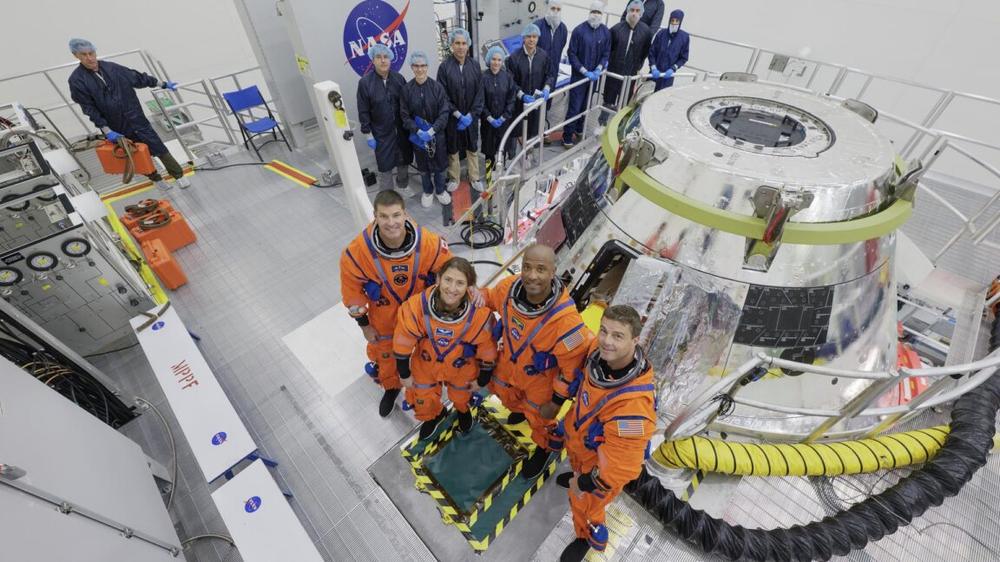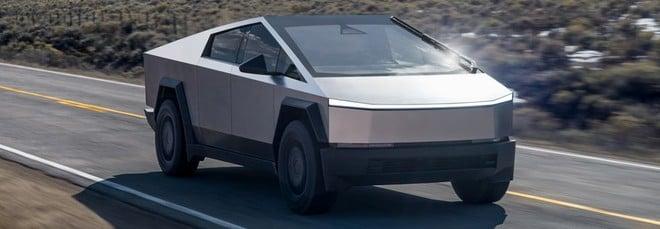How calm, cool, and utterly chill is the crew of NASA’s first Moon mission in more than half a century?
Let’s start with Canadian astronaut Jeremy Hansen.
"You know me, personally, I hope to take a very short nap on the pad," he said. "There's enough time built in there to have a nap. I’ve been practicing falling asleep. So if the loops are quiet enough, and I get a minute, I’ll try for a nap."
Imagine that. Hansen will be seated atop a Brobdingnagian rocket, fueled with explosive liquid hydrogen and oxygen, just about to blast off on a wild ride that will ultimately carry him and three other crew members out to the Moon and back. Perhaps a billion people around the world will be watching.
And there he’ll be, trying to catch a few winks.
That Hansen is contemplating a nap on the launch pad of the Artemis II mission underscores just how frenetic the opening day of this mission will be as the astronauts test out the Orion spacecraft to ensure it is indeed ready to fly them to the Moon. It will be a super-busy, high-stress time, during which everything must go right or they'll have to come straight back to Earth. So yes, maybe the crew should grab some sleep when they can.
To understand their activities in space on that first day, Ars spoke with each of the four crew members—Hansen, alongside Commander Reid Wiseman, Pilot Victor Glover, and Payload Specialist Christina Koch—about their duties during this stretch. Here is the mission in their own words.
Liftoff
Glover: Launch comes after you’ve been awake for seven hours, and your brain is going in a bunch of different places, right? And so you've already worked a full day, and then you go do, like, the most energetic thing you've ever done in your life.
Liftoff of the Artemis II mission is presently scheduled for no earlier than February 5, 2026. If the rocket, spacecraft, and weather are good, the mission will launch at 8:09 pm ET. On this timeline, the crew would wake up at about 1 pm and receive a weather briefing before being suited up. About three hours before liftoff, they will clamber into the Orion spacecraft and strap into four seats. At this point, Hansen and maybe one or two of the other crew members will attempt to sleep for a few minutes, given the work ahead.
No one will be able to sleep when the launch window opens, however.
Wiseman: About seven seconds prior to liftoff, the four main engines light, and they come up to full power. And then the solids light, and that’s when you’re going. What's crazy to me is that it's six and a half seconds into flight before the solids clear the top of the tower. Five million pounds of machinery going straight uphill. Six and a half seconds to clear the tower. As a human, I can’t wait to feel that force.
A little more than two minutes into flight, the powerful side-mounted boosters will separate. They will have done the vast majority of lifting to that point, with the rocket already reaching a velocity of 3,100 mph (5,000 kph) and an altitude of 30 miles (48 km), well on its way to space. As payload specialists, Koch and Hansen will largely be along for the ride. Wiseman, the commander, and Glover, the pilot, will be tracking the launch, although the rocket's flight will be fully automated unless something goes wrong.
Wiseman: Victor and I, we have a lot of work. We have a lot of systems to monitor. Hopefully, everything goes great, and if it doesn’t, we’re very well-trained on what to do next.
After 8 minutes and 3 seconds, the rocket's core stage will shut down, and the upper stage and Orion spacecraft will separate about 10 seconds later. They will be in space, with about 40 minutes to prepare for their next major maneuver.
In orbit
Koch: The wildest thing in this mission is that literally, right after main-engine cutoff, the first thing Jeremy and I do is get up and start working. I don't know of a single other mission, certainly not in my memory, where that has been the case in terms of physical movement in the vehicle, setting things up.
Koch, Wiseman, and Glover have all flown to space before, either on a SpaceX Dragon or Russian Soyuz vehicle, and spent several months on the International Space Station. So they know how their bodies will react to weightlessness. Nearly half of all astronauts experience "space adaptation syndrome" during their first flight to orbit, and there is really no way to predict who it will afflict beforehand. This is a real concern for Hansen, a first-time flier, who is expected to hop out of his seat and start working.
Hansen: I'm definitely worried about that, just from a space motion sickness point of view. So I'll just be really intentional. I won't move my head around a lot. Obviously, I'm gonna have to get up and move. And I'll just be very intentional in those first few hours while I'm moving around. And the other thing that I'll do—it's very different from Space Station—is I just have everything memorized, so I don't have to read the procedure on those first few things. So I'm not constantly going down to the [tablet] and reading, and then up. And I'll just try to minimize what I do.
Koch and Hansen will set up and test essential life support systems on the spacecraft because if the bathroom does not work, they're not going to the Moon.
Hansen: We kind of split the vehicle by side. So Christina is on the side of the toilet. She's taking care of all that stuff. I'm on the side of the water dispenser, which is something they want to know: Can we dispense water? It's not a very complicated system. We just got to get up, get the stuff out of storage, hook it up. I'll have some camera equipment that I'll pull out of there. I've got the masks we use if we have a fire and we're trying to purge the smoke. I've got to get those set up and make sure they're good to go. So it's just little jobs, little odds and ends.
Unlike a conventional rocket mission, Artemis II vehicle's upper stage, known as the Interim Cryogenic Propulsion Stage, will not fire right away. Rather, after separating from the core stage, Orion will be in an elliptical orbit that will take it out to an apogee of 1,200 nautical miles, nearly five times higher than the International Space Station. There, the crew will be further from Earth than anyone since the Apollo program.
At this apogee, 50 minutes into the flight, the upper stage will need to ignite for the first time to raise Orion's perigee. This will bring the spacecraft back around the Earth. At this point, they'll reach a critical decision point. If everything goes well, the upper stage will conduct a longer burn to raise Orion's next apogee from 1,200 nautical miles to 38,000 miles. This will place the vehicle in an orbit around Earth that takes 23.5 hours.
Glover: That's going to be bananas. People keep talking about us seeing the Moon, but man, I'm super excited about seeing the full disk of the Earth from that far.
Prox Ops
This apogee burn is a long one, lasting for about 15 minutes. Following this, Wiseman and Glover have about an hour to get out of their suits and prepare for a big test of both the Orion spacecraft and their piloting skills. They will also swap seats, with Glover at the primary controls of Orion. At 3 hours and 24 minutes into the flight, Orion will separate the rocket's upper stage and then begin what is called "proximity ops," or just prox ops, for more than two hours. During this tense period, Orion will fly a series of maneuvers around the upper stage.
Wiseman: As soon as we separate, Victor and I are on stopwatches. We have to start sending commands to the vehicle to get a 180-degree pitch flip around maneuver. Then we start flying formation around that thing for the next two, two-and-a-half hours. It all comes super quick. From the moment we separate from the Interim Cryogenic Propulsion Stage, every second counts.
It will be a tense time for the crew. No one has ever flown Orion before.
Wiseman: We are trying to characterize the handling qualities, the flying qualities of the Orion spacecraft and the European Service Module. Really, what we're trying to do is give data to the ground so they can anchor their models. We’ve got a lot of models on how this thing will fly. And we're going to fly around the Interim Cryogenic Propulsion Stage, roughly 10 meters off the nose of the ICPS, for a series of maneuvers, gross handling qualities, fine handling qualities. And then we're actually going to fly around to the side. So that'll let us do some pitch attitude, pitch changes as we go around. And then we're going to fly off the side target of the ICPS. It will be about two hours of those maneuvers, doing pure developmental test pilot handling qualities evaluations, Cooper-Harper ratings.
Glover, who served as pilot aboard the Crew-1 mission in November 2020, will be piloting the spacecraft for these exercises, as Wiseman communicates with Mission Control in Houston.
Glover: "We're going to be giving them handling quality data just like our old Navy test piloting days. Dragon's got a touchscreen, and Orion's got a THC [translation hand controller] and an RHC [rotational hand controller]. And you know me, I’m a fighter pilot. I like having that control stick and stick-and-throttle feel in my hands. This vehicle looks like something straight out of the '90s, early 2000s. It looks like a Space Shuttle because it was built by the same companies that built the Space Shuttle. It looks like you’ve gone back in time, but it’s taken us to the future of human spaceflight.
After completing these tests, the spacecraft will back away from the Interim Cryogenic Propulsion Stage, which will raise its perigee and be disposed of into a graveyard orbit. Orion, meanwhile, will continue on its high-Earth orbit, and Glover and Wiseman will turn piloting of Orion over to the flight computer.
Wiseman: In the simulators, once we get away from the ICPS and we hand automation to the vehicle, that is the first time I’ve seen the crew breathe a sigh of relief.
Fly me to the Moon?
After the proximity operations, the crew has about three hours to dry out their space suits and continue converting the cabin of Orion from its launch setup to spaceflight mode. This will include setting up a flywheel for exercise. Several of the crew members will work out at this time to stress the life support system to ensure it can handle the excess carbon dioxide and humidity from these exertions.
Glover: The first workout is a checkout of that exercise hardware, but it's also a checkout of the environmental control system. Because I'm going to be breathing, I'm going to be sweating, making more humidity and more CO2 for the life support system to scrub out. And then if that's good, that's another check that means we can go to the Moon.
During this time frame, the crew will also set up a food warmer and get something to eat. Following these activities, there is a four-hour period allotted for a nap, then the crew will awaken for a burn by the Orion spacecraft's main engine to raise its perigee. This will all be automated, but the crew will need to carefully monitor the vehicle's performance and confer with Mission Control before bedding back down for another four-hour nap. If they can sleep, that is.
Hansen: We get a nap, roughly about a four-hour block there, and then we get up, and we do the perigee raise burn at that point, and we do an emergency comms check out, and then we go back to bed again. So it's a strange day from a sleep perspective. You know, it will be fine if we can sleep in all the little windows. The challenge is actually getting to sleep in that excitement. I think exhaustion will help.
What will not help is knowing that, at the end of their second nap period, NASA managers will have a final decision on whether Orion's propulsion and life support systems have been cleared for a Trans-lunar injection (TLI) burn, which will send the spacecraft flying to the Moon. Wiseman said he thinks the crew will already have a good sense of things after the perigee burn, which occurs after the first nap.
Wiseman: I think we’ll know after we do our perigee burn. From there, we have 12 hours until we come back down to perigee and burn TLI. So I think we’ll know right there if there are no major failures. That perigee raise burn, for me—we’ll know if the vehicle is handling well. But from that 12 hours to when we do the TLI is when the Mission Management Team and the folks in Houston will be talking about preparedness for TLI. In most cases, if we miss TLI burn one, we can do another one 24 hours later.
Koch said she thinks the crew might know even earlier, especially if the tea leaves are not looking good.
Koch: In some ways, it could be immediate, like if there's a leak in one of our scrubber valves or something like that. We do some things literally during ascent. We actually activate some of our prop systems right away because we have to know whether we can use that prop for a once-around abort option. If we can't, then we have to do a different abort option. It could be something that we find out right toward the end. If we lose our second out of two inertial measurement units right before TLI, we're instantaneously no-go, and we will literally reach up and hit the cancel burn button. Our vehicle will start talking to us almost right away. We could even have inklings on the pad.
But if they do go, it will be glorious. After the TLI burn, the crew will have a few more hours of activities, including speaking to people back on Earth who will be excited to talk to astronauts who are breaking away from the pull of our planet's gravity. Then, finally, they will be able to take a break, have a couple of hours to wind down, have dinner, and then get eight hours of uninterrupted sleep.
Glover: In my brain, until that point, this is all still one long day. So for me, the first real sleep is on the second day.
A sleep they will have decidedly earned, having tested Orion, burned its engines, and flown millions of miles from home.

 Tesla Cybertruck in Europa? Non si può fare: lo dice anche l'esercito americano
Tesla Cybertruck in Europa? Non si può fare: lo dice anche l'esercito americano